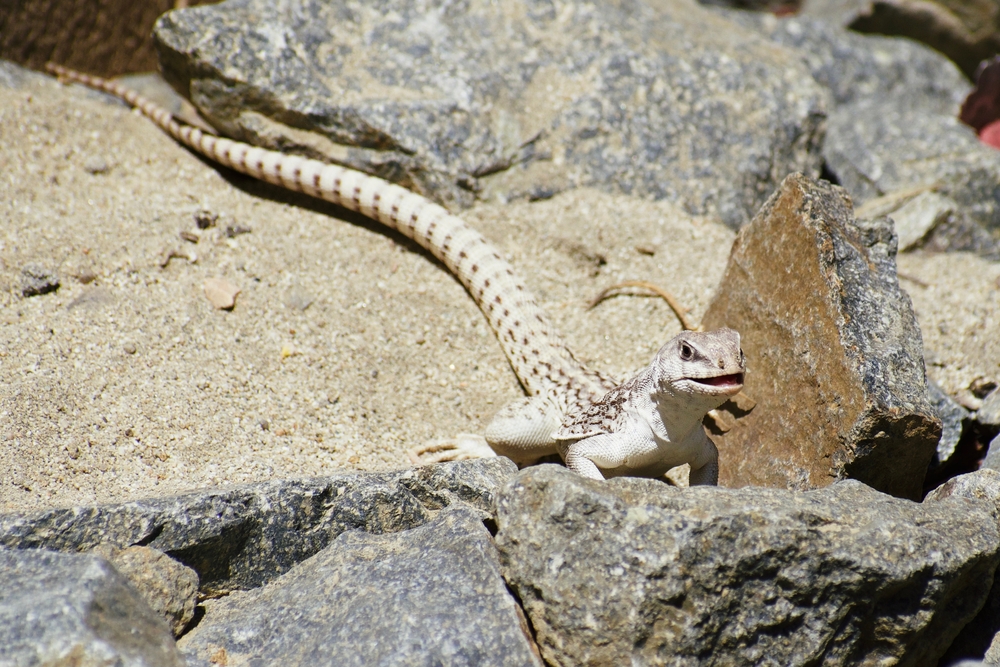About
The desert iguana is a hardy, heat-tolerant lizard native to the arid regions of the southwestern United States and northwestern Mexico, including the Sonoran and Mojave Deserts and Baja California. It is one of the most common lizards in these regions and is well adapted to survive in scorching daytime temperatures and dry environments.
Adults typically measure 30–40 cm (12–16 inches) in total length, including the long, slender tail. Their coloration is pale gray or tan with a series of brownish spots or crossbands down the back, which become a more pronounced reticulated (net-like) pattern on the sides. This cryptic coloring blends well with desert sand and rocks. During the breeding season, the sides of the belly and legs may flush pinkish in both males and females.
The desert iguana is diurnal and highly active during the hottest parts of the day—when many other reptiles retreat. It is primarily herbivorous, feeding on the flowers, leaves, and fruits of desert plants, especially creosote bush, but will also eat insects on occasion.
It prefers sandy or gravelly areas with sparse vegetation and often takes shelter in burrows, which it may dig itself or appropriate from rodents. These burrows provide refuge from predators and extreme temperatures.
Reproduction is oviparous, with females laying 3–8 eggs per clutch in summer. Hatchlings emerge in late summer or early fall and are immediately independent.
While not considered threatened, the desert iguana plays an important role in desert ecosystems and is sometimes studied for its extreme temperature tolerance.
The desert iguana’s scientific name is Dipsosaurus dorsalis, and it belongs to the family Iguanidae.



































































